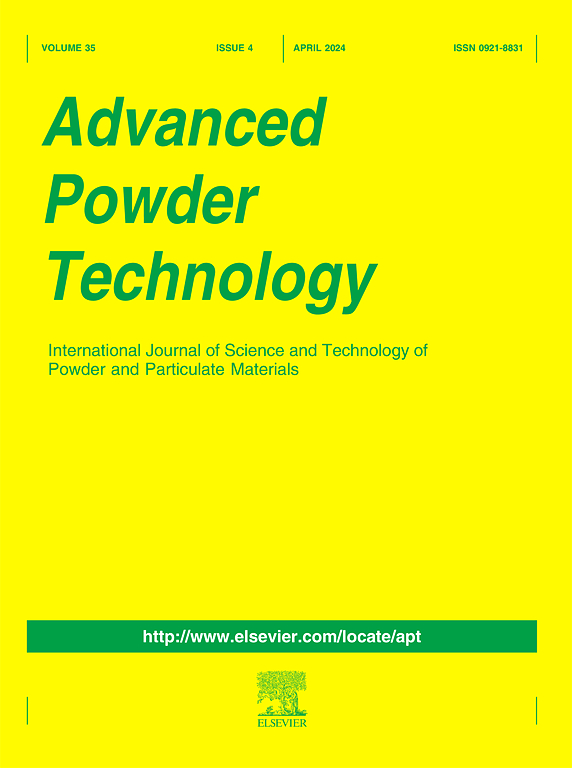Comparative CFD study on regional drug deposition of Breezhaler® and Handihaler® in the human respiratory tract
IF 4.2
2区 工程技术
Q2 ENGINEERING, CHEMICAL
引用次数: 0
Abstract
Inhalation therapy has become a cornerstone in the management of chronic respiratory diseases such as chronic obstructive pulmonary disease (COPD) and asthma. Among various devices, Breezhaler® and Handihaler® are two widely used dry powder inhalers (DPIs) in clinical practice. However, due to differences in structural design and aerodynamic characteristics, these devices exhibit markedly different drug deposition patterns within the respiratory tract. Currently, there is a lack of comprehensive comparative studies investigating their deposition efficiency and underlying mechanisms across distinct regions of the airway. To address this gap, the present study employs CFD-DPM approach to evaluate and compare the deposition and distribution behavior of Breezhaler® and Handihaler® in the MT, TB, and deep lung regions under five pressure drop levels and four particle size conditions. The results indicate that Breezhaler® features a more streamlined internal structure, allowing the airflow to maintain higher and more uniform velocities. In contrast, Handihaler® generates lower overall airflow speeds and exhibits greater velocity gradients and localized turbulence within the oral cavity. For both devices, oral deposition rates increase with rising pressure drops and particle sizes, with Handihaler® consistently showing higher oral deposition, particularly under elevated flow and particle size conditions. In the TB region, Breezhaler® demonstrates superior deposition efficiency compared to Handihaler®. Enhancing TB deposition with Breezhaler® can be achieved by utilizing smaller particle sizes, while Handihaler® can improve TB deposition efficiency even with larger particles by operating under lower pressure drops. Furthermore, Handihaler® shows better performance in drug delivery to the deep lung region.

Breezhaler®和Handihaler®在人呼吸道区域药物沉积的比较CFD研究
吸入疗法已成为慢性呼吸系统疾病(如慢性阻塞性肺疾病(COPD)和哮喘)治疗的基石。在各种设备中,Breezhaler®和Handihaler®是临床实践中广泛使用的两种干粉吸入器。然而,由于结构设计和空气动力学特性的差异,这些装置在呼吸道内表现出明显不同的药物沉积模式。目前,缺乏全面的比较研究来调查它们在气道不同区域的沉积效率和潜在机制。为了解决这一差距,本研究采用CFD-DPM方法评估和比较了Breezhaler®和Handihaler®在五种压降水平和四种粒径条件下在MT、TB和深肺区域的沉积和分布行为。结果表明,Breezhaler®具有更流线型的内部结构,允许气流保持更高和更均匀的速度。相比之下,Handihaler®产生更低的整体气流速度,并在口腔内表现出更大的速度梯度和局部湍流。对于这两种设备,口腔沉积率随着压降和颗粒尺寸的增加而增加,Handihaler®始终显示更高的口腔沉积,特别是在高流量和颗粒尺寸条件下。在TB区域,与Handihaler®相比,Breezhaler®显示出更高的沉积效率。通过使用更小的颗粒尺寸,可以增强Breezhaler®的TB沉积,而handdihaler®可以通过在更低的压降下操作,提高TB沉积效率,即使颗粒更大。此外,Handihaler®在深肺区域的药物递送方面表现出更好的性能。
本文章由计算机程序翻译,如有差异,请以英文原文为准。
求助全文
约1分钟内获得全文
求助全文
来源期刊

Advanced Powder Technology
工程技术-工程:化工
CiteScore
9.50
自引率
7.70%
发文量
424
审稿时长
55 days
期刊介绍:
The aim of Advanced Powder Technology is to meet the demand for an international journal that integrates all aspects of science and technology research on powder and particulate materials. The journal fulfills this purpose by publishing original research papers, rapid communications, reviews, and translated articles by prominent researchers worldwide.
The editorial work of Advanced Powder Technology, which was founded as the International Journal of the Society of Powder Technology, Japan, is now shared by distinguished board members, who operate in a unique framework designed to respond to the increasing global demand for articles on not only powder and particles, but also on various materials produced from them.
Advanced Powder Technology covers various areas, but a discussion of powder and particles is required in articles. Topics include: Production of powder and particulate materials in gases and liquids(nanoparticles, fine ceramics, pharmaceuticals, novel functional materials, etc.); Aerosol and colloidal processing; Powder and particle characterization; Dynamics and phenomena; Calculation and simulation (CFD, DEM, Monte Carlo method, population balance, etc.); Measurement and control of powder processes; Particle modification; Comminution; Powder handling and operations (storage, transport, granulation, separation, fluidization, etc.)
 求助内容:
求助内容: 应助结果提醒方式:
应助结果提醒方式:


